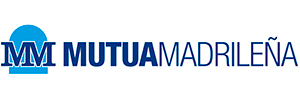Introduction of a work methodology based on continuous delivery

We proposed to Mutua an integral solution based on five epics: Application Architecture, Automation, Quality, Security and Governance of Architecture.
We have managed to make the delivery with excellent quality, within the deadlines set, and with the budget estimated by management, issues that make us worthy of an” Excellent “in the assessment of it, and a reference for the rest of the initiative. Thank you very much to the Profile team for the dedication, without your commitment and dedication we would not have reached the goal that we had set ourselves.
Ángel P. Mateos
Product Owner – Mutua Madrileña
Industry
Insurance
Type of service
Project
Technological area
Accelerated Delivery
Custom Development
Strategic Architecture
The Challenge
Within its Digital Transformation strategy, Mutua Madrileña, one of the leading insurance companies, with more than 11 million customers, wanted to update and extend its IT platform.
The objective? To introduce a work methodology based on continuous delivery, built on pillars that could guarantee quality and confidence in the produced software and the reduction of time-to-market.
To that effect, it was necessary to adapt and redesign the architecture components of existing applications, integrating in them transversal aspects such as security, monitoring, aggregation of logs, implementation of standards and quality metrics (KPI) and the governance of architecture.

Our Solution
From Profile, we proposed to Mutua an integral solution based on five epics: Application Architecture, Automation, Quality, Security and Governance of Architecture.
Application Architecture
- Standardization of application runtimes on OpenShift Container Platform
- Evolution of web application archetypes and revision of shared libraries
- Definition of coexistence strategy between the two architecture models (legacy and new)
- Establishment of monitoring and logging mechanisms
- Modernize project documentation utilities
- Redesign the configuration management system
Automation
- Automatic creation of resources of the different tools of the ecosystem
- Gitlab / Bitbucket: the creation of code repositories associated with applications
- Kiuwan and Sonar: static code analysis
- Jenkins: the generation of declarative pipelines
- OpenShift Container Platform: assets such as BuildConfig, DeploymentConfig or ConfigMaps
- Definition of Declarative Pipelines in Jenkins
- Definition and parameterization of the resources required by application in the different environments
- Real-time refresh automation of configuration properties and secrets
- Outreach actions to promote and improve the quality of developments
- Developer’s portal
- Generation and publication of project documentation and bookstores.
Quality
- Determine dissemination actions aimed at improving quality
- Analyze the performance measurement needs of the applications and their inclusion in the pipeline
- Preparation of quality guides with recommendations and good practices on testing
- Regulation of acceptance blocking thresholds
- Configuration of e2e testing platform for the execution of functional tests
Security
- Secure development
- SSO
- Security in distributed applications
Government of Architecture
- Mechanisms of publication and configuration of Architecture components
- Confiscation mechanisms of architecture bookstores
- Control systems for the correct monitoring of the architecture
- Integration with IT Government tools
- Log of changes in the operating platform
- Versioning and packaging policies